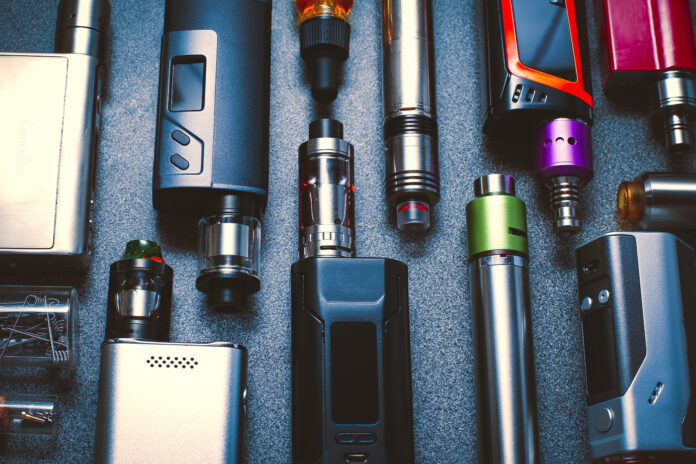There’s little question vapor pens are taking a rock-solid position as a leading cannabis delivery product, especially among younger consumers, especially in California. Vape pens account for almost a quarter of all cannabis sales in the state, with spectacular growth starting back in 2018, still flying at a bold trajectory over the past year, and predicted to stay that way for the foreseeable future. But that’s not to say the market is saturated; far from it. Vapes are a good business to be in, and the classic techniques for successful sales will make all the difference between those taking a modest slice of the pie versus those taking a triple-sized serving.
Let’s take a look at a recent product release from The Parent Company (Jay-Z’s pet project): Fun Uncle Cruisers. As we’ll see, they take two key elements from the consumer-packaged-goods playbook.
Fun Uncle Cruisers are the company’s first vape offering with full gram cartridges available in five popular strains at an MSRP of $25. Yes, you read that right, and we’ll discuss the implications in a moment. Cruisers clearly are being pitched to the youngest legal consumer market, and this impulsive, less-predictable sector requires some creative thinking.
Here are some observations about the way The Parent Company is positioning the product as a disruptor.
Distribution
The first guideline in the CPG playbook is “Build relationships with mass retailers that provide advantaged access to consumers.” The Parent Company has a distinct advantage over the competition: TPC is a holding company made up of a number of merged industry leaders.
The company is distributing the product exclusively through its Caliva division, a dominant, single-state cannabis operator in California. Caliva already boasts loyal walk-in traffic flow and also takes online orders for pickup and delivery. It also supplies retailers and claims to cover, altogether, about half of California’s population. That’s a massive, measurable advantage in such a large and fragmented market, and it’s not a bad way to get your product out.
Price
“Design operating models for consistent execution and cost reduction.” The dynamic is circular. There has to be a closely held secret here, but cost reductions apparently allow The Parent Company to drop the MSRP to $25 (about $12.50 wholesale), and the resulting volume allows the company to maintain the rock-bottom price point. With the industry’s best-selling vape pens priced from $40 to about $55, Cruisers will be seen as an “opportunity” for younger consumers ready to experience vaping but armed with less disposable income and happy to pay almost half the expected price to satisfy their curiosity.
With that said, Cruisers don’t present as a low-end or newbie product. The distillation team sources flower from more than 500 growers, and the dose is a full gram. While some competitors offer low-cost products, they generally come with a correspondingly miniaturized or weaker cannabis dose.
That’s not the case here. According to a company announcement, the doses use “a full-spectrum distillate that tests over 80 percent THC, making them an exceptional value for the quality and flavor.” Yes, the possibility of “same value, lower price” sounds too good to be true, so look for the reviews to confirm or refute the quality claims. But pricing on vape pens has dropped over the past couple of years, and this move promises to drop that figure even lower.
Vibe
The product design is retro 1970’s, reminiscent of the early days of weed culture, and includes popular strains like Berry Gelato, Strawberry Cough, Lemon Jack, and the well-known SFV OG and GG4. These are specific to TPC’s pens, which match competitors’ offerings but don’t correspond to the company’s dominant flower and pre-roll offerings. One can only assume TPC seeks to make the pens more individualized, although that tactic will cost them on the lost cross-sell opportunities when it comes to those looking for the familiar.
Where aren’t these new products a leap forward? Innovation. As a classic distillate product with the standard 510 threaded cartridge, there’s nothing to generate buzz about imaginative hardware or the nature of the basic experience. For $25, most consumers aren’t going to be complaining out loud, but it’s certainly a missed opportunity for buzz beyond the low price.
Will other brands begin competing on prices to match this low-end range, perhaps driving volume up enough to maintain profit levels for both producers and retailers? In other words, is this pricing model a disruption that will ripple through the industry as a whole, as opposed to just TPC’s bottom line? And if the company does suddenly face competition on lowball pricing for a product incongruously considered “premium,” will Cruisers need to innovate or expand the product line in some way to maintain their edge?
I’m pretty confident The Parent Company will figure it out. Like a real Fun Uncle, it’s going to be fascinating to watch.

Cy Scott is co-founder and chief executive officer at Headset Inc., turning retail data into real-time cannabis market insights. He provides industry analysis and insights about innovative brands through his weekly blog, Cannabis Packaged Goods. Prior to founding Headset, Scott co-founded Leafly and helped grow the site into the world’s leading cannabis information resource. Along with his work at Headset, Scott founded a monthly cannabis tech meetup hosting cannabis entrepreneurs and technology developers that has expanded into multiple regions throughout the U.S. His favorite strain is Tangie.












[…] importance in this industry. From formulations to marketing, there are many considerations for launching a beverage into the market. Do the due diligence to find out what’s acceptable and what’s not. Invest time and resources […]
[…] industry’s “high holy day” or unofficial holiday, companies and individuals mark the day with product launches, promotional offers, and community events. Legal businesses seize opportunities to drive sales and […]
[…] keep our stock fresh, launching new and exciting products nearly every month,” said Farnsworth, whose life partner is fashion designer Adam […]
[…] by traditional industries including agriculture, pharmaceuticals, and consumer packaged goods, operators have adopted technologies that streamline operations from plant cultivation to packaging […]
[…] Exceptional products and the consumers who use them deserve exceptional packaging. Keep that in mind for your next launch. […]
[…] offering a bundle deal or highlighting a new product launch, repetition can encourage impulse buys. This strategy is not a surprise in light of marketing […]
[…] before anyone begins cutting things that reduce product quality. Operations can be restructured, launches can be put on ice, and nice-to-haves can stay on hold. But as soon as your core product starts slipping, you run the […]
[…] at the center of the experience but also gives them space to shine. “You can’t advertise like traditional [consumer-packaged-goods] brands, so how do you get your name out there? You do that with stores like this in tourist areas,” he […]
[…] also suffer with other basic marketing initiatives such as coordinating product launches, determining packaging, and aligning messaging across multiple markets. They operate in a brutally […]
[…] this means following up with clients, coworkers, and yourself until you have everything you need to launch a campaign. Being diligent means having a primary plan and also a backup plan. It means having a content […]
[…] regulations that can affect everything from packaging to marketing, potency, and flavors, building a consistent national cannabis consumer-packaged-goods brand is exceptionally […]
[…] that down to the budtenders and they are just going to sell what you tell them to sell, like in a normal CPG space,” said Gomez. “Nobody gets into cannabis because they like doing what they’re […]
[…] and manufacturers across the continuum look to automation to increase efficiency, lower costs, and launch products on an accelerated timeline. In addition, widespread labor shortages now challenge the manual labor tactics on which the […]
[…] Launching a new product line is hard work. It’s also expensive, especially for startups that may not have the up-front investment for all the equipment, raw materials, labor, packaging, and warehouse space required to create, store, and ship goods that may or may not resonate with the targeted consumers. […]